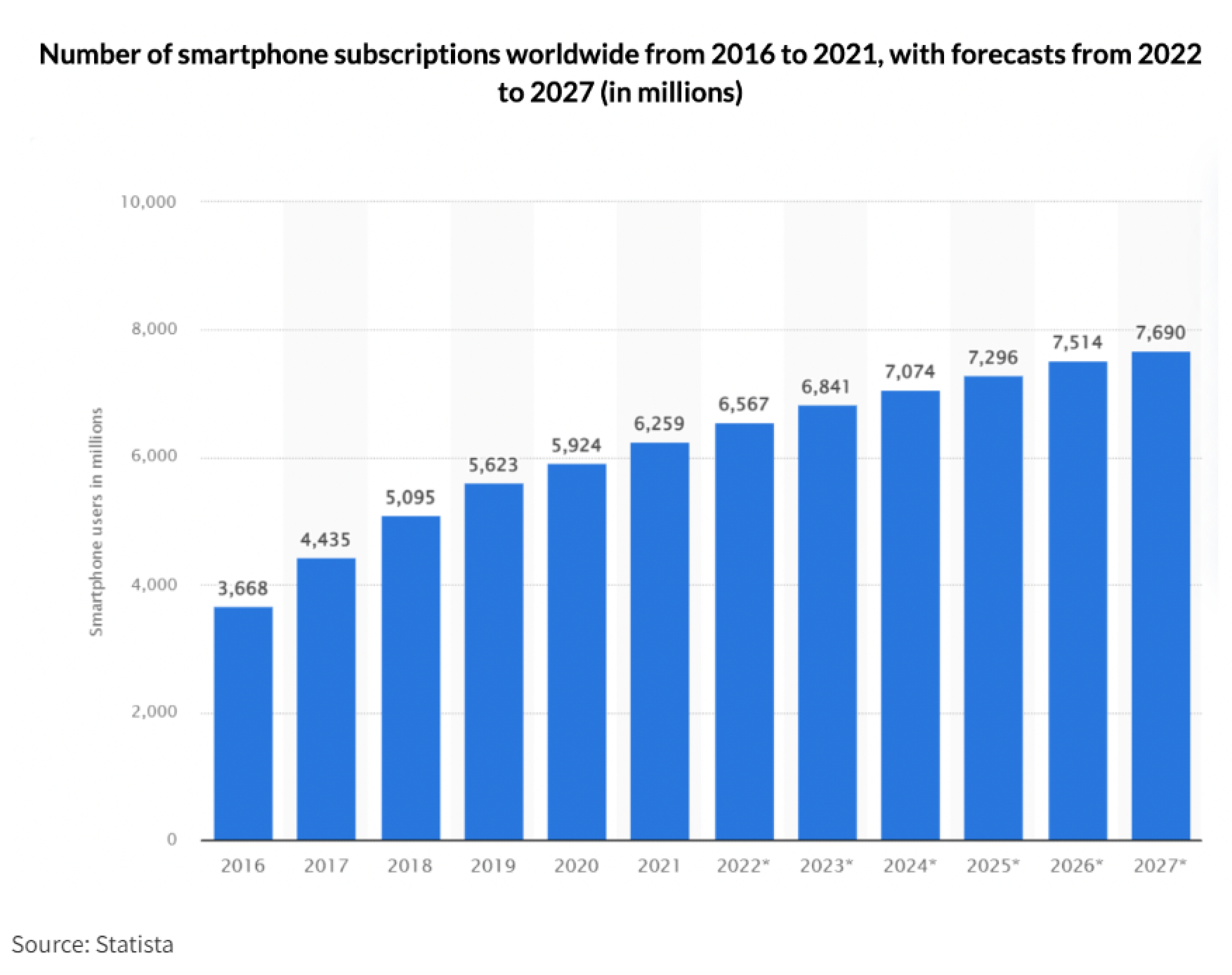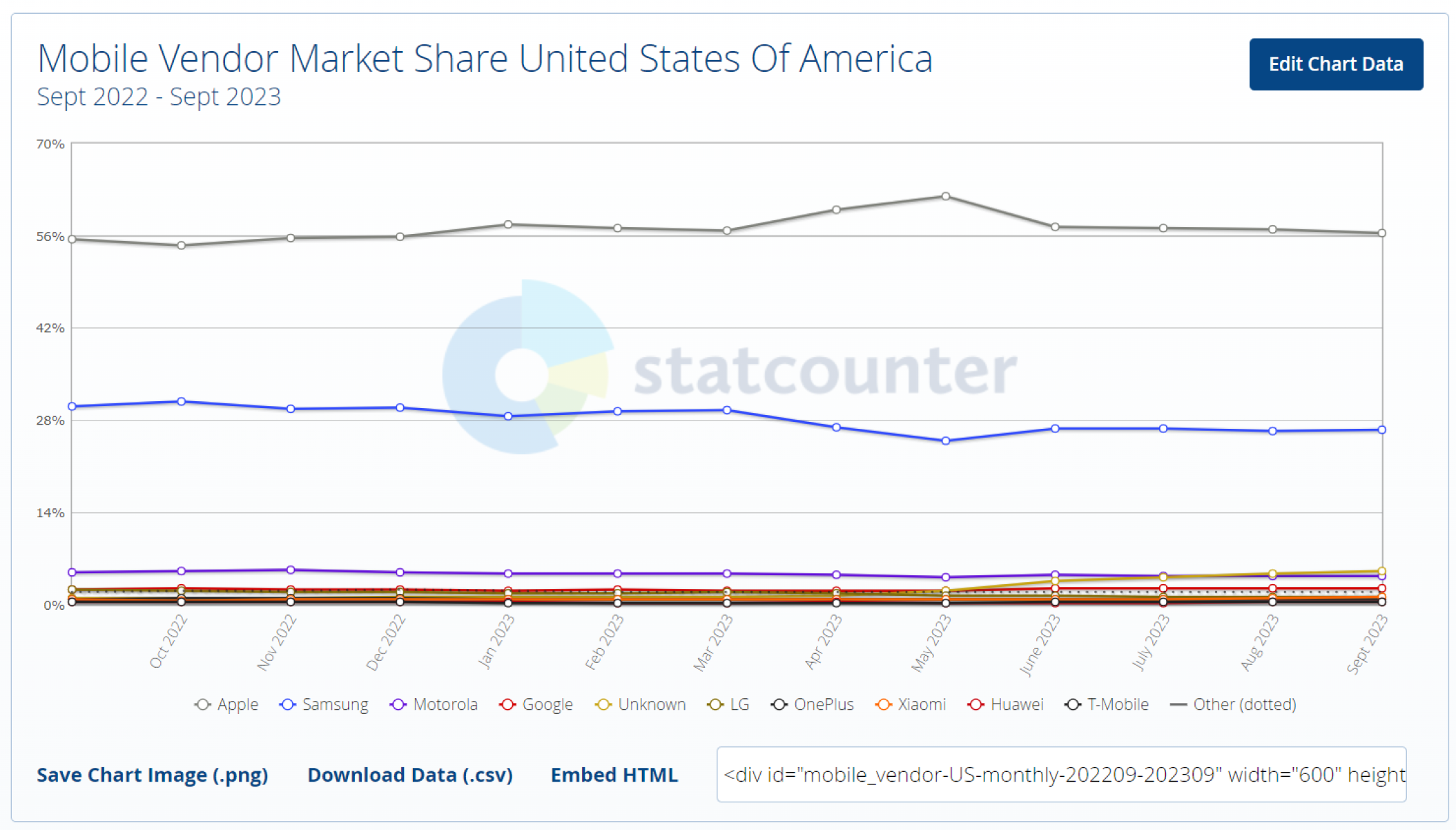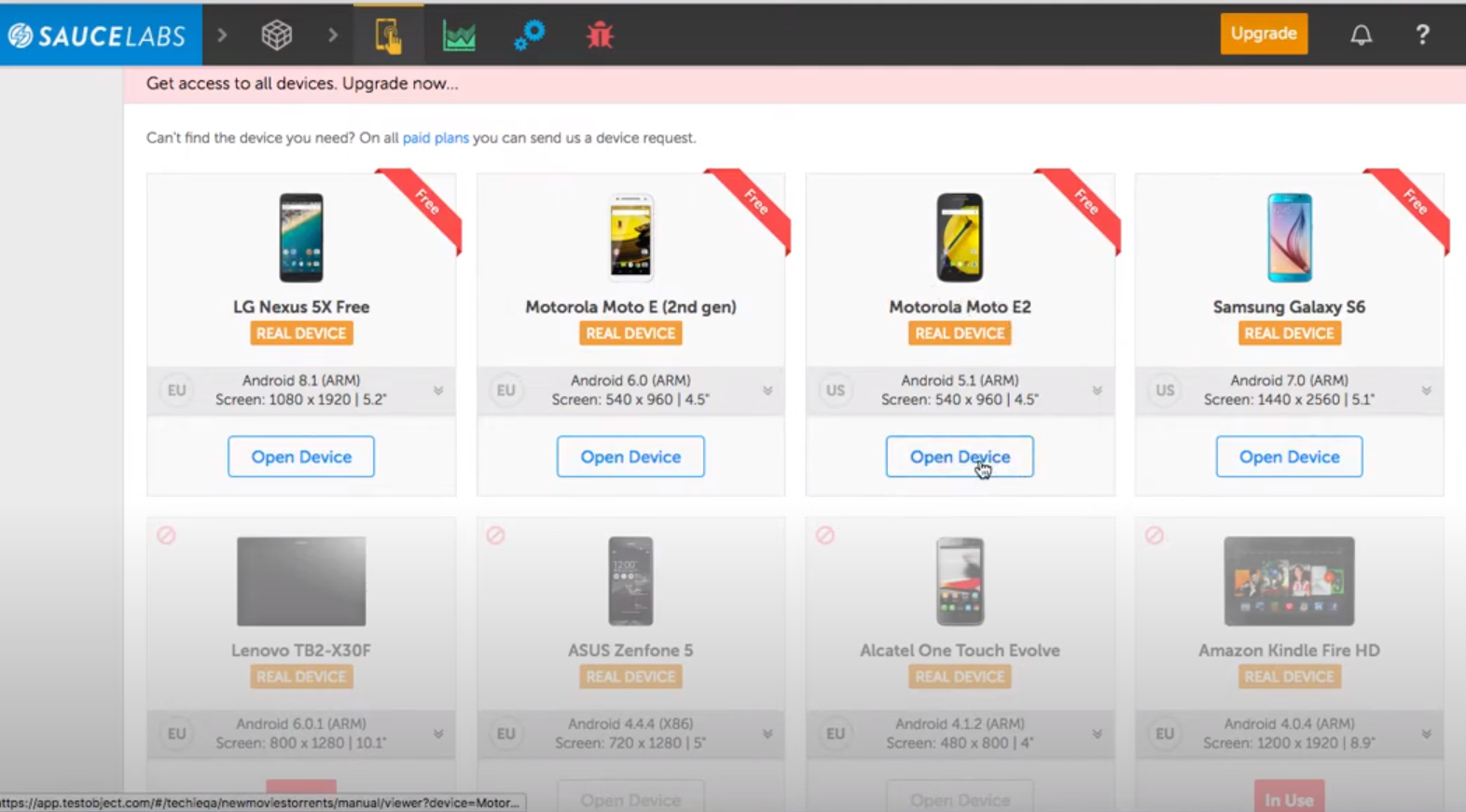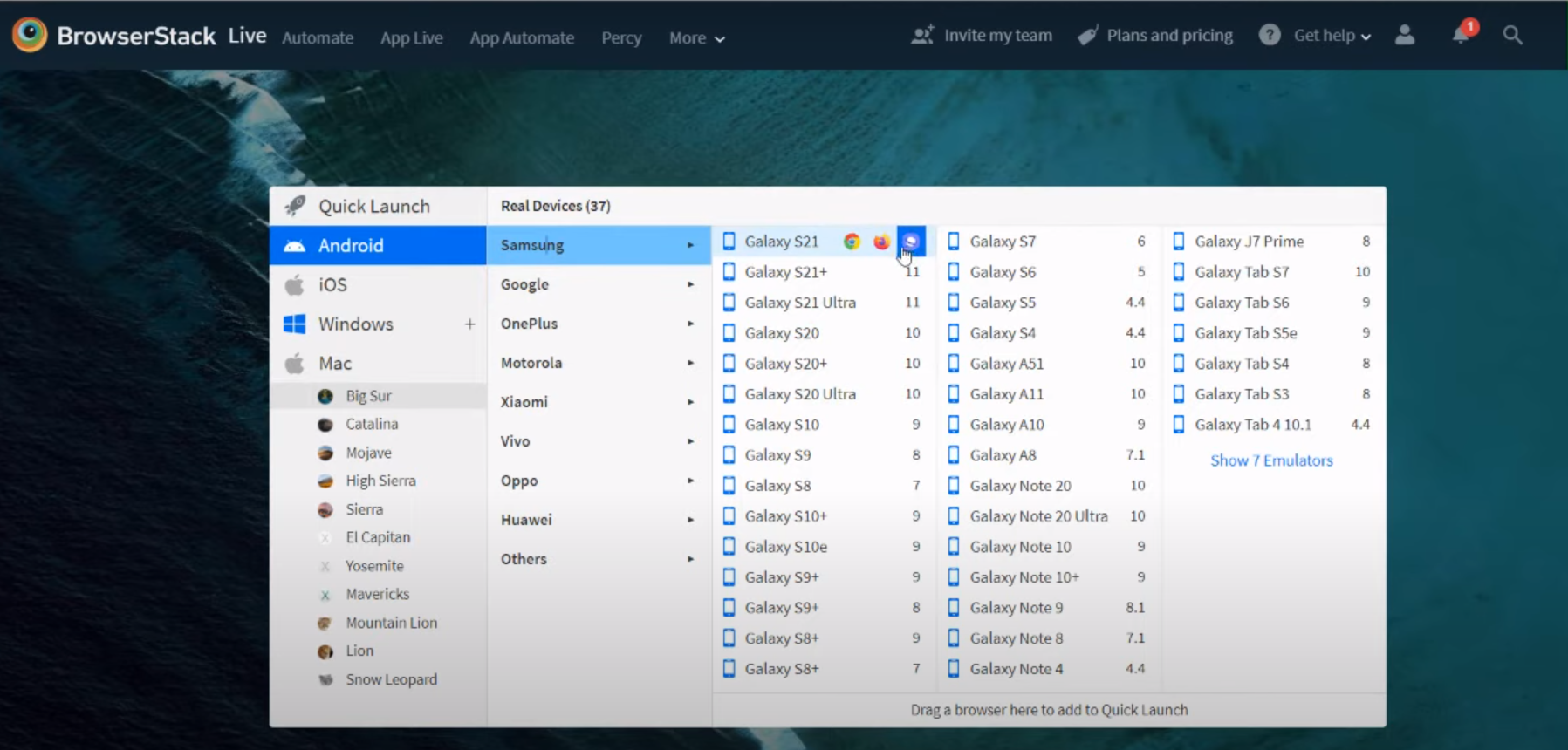In today’s dynamic digital landscape, delivering an impeccable user experience across an ever-expanding array of devices is non-negotiable. Just look at the statistics below. The number of mobile devices continues to grow, and their diversity is fascinating. With smartphones, tablets, laptops, and a multitude of web browsers to contend with, achieving digital compatibility has become an exhilarating challenge. This is where the remarkable practice of cross-device testing comes into play.


Today, we’ll embark on an enlightening journey through the realm of cross-device testing, emphasizing its paramount importance! And as a bonus treat, we’ll also conduct an in-depth comparison among five exceptional testing solutions: Sauce Labs, BrowserStack, Google Device Cloud, HeadSpin, and LambdaTest. So, fasten your seatbelts and join us on this thrilling quest for digital perfection!
The Importance of Cross-Device Testing
This can be broken down into 5 categories:
#1: Diverse User Base
Today’s users access websites and applications through a multitude of devices, including smartphones, tablets, laptops, and desktops. Each device has unique specifications, screen sizes, and browser capabilities. Ensuring that your digital assets perform flawlessly across this diverse landscape is crucial to reaching a broader audience.

#2: Consistent User Experience
The heart and soul of user experience (UX) can be found in the seamless journey your digital assets provide. Inconsistencies in UX across different devices can lead to frustration and drive users away. Cross-device testing is your compass in the world of digital navigation, ensuring that your users enjoy a consistent, positive, and unforgettable experience, no matter which device they choose.
#3: Safeguarding Your Brand Reputation
Your website or application is a reflection of your brand. A glitchy, problematic experience on a specific device can tarnish your reputation. On the flip side, ensuring a consistent and reliable user experience across all devices adds a touch of digital prestige to your brand.
#4: Boosting Conversion Rates
The ultimate goal of most digital endeavors is conversion. A seamless user experience translates directly into higher conversion rates. When users encounter problems on their preferred devices, they are less likely to convert. Improved conversion rates mean increased revenue, making cross-device testing an investment worth its weight in gold.
#5: Global Market Expansion
The digital age has torn down geographical borders, opening up new markets and opportunities. As businesses aim to expand globally, the need to cater to different regions with varying device preferences becomes paramount. Cross-device testing ensures that you can meet the needs of diverse markets, giving your business a competitive edge in the global arena.
Comparative Analysis of Testing Solutions
Now that we’ve established the significance of cross-device testing, let’s dive into the exciting world of testing solutions and see how they stack up against each other:
Sauce Labs
Sauce Labs is a cloud-based testing platform renowned for its scalability and extensive device coverage. It offers real-device testing, automated testing, and continuous integration support. With a vast selection of browsers, operating systems, and devices, Sauce Labs enables thorough cross-device testing. It also provides seamless integration with popular testing frameworks like Selenium and Appium.

Pros:
- Extensive device and browser coverage.
- Support for both manual and automated testing.
- Integration with popular testing frameworks.
- Robust reporting and analytics.
Cons:
- Pricing may be higher compared to some alternatives.
- Learning curve for new users.
BrowserStack
BrowserStack is another cloud-based testing platform, beloved for its user-friendly interface and diverse device coverage. It offers real-device testing, automated testing, and responsive design testing. BrowserStack seamlessly integrates with popular development tools and frameworks.

Pros:
- User-friendly interface.
- Comprehensive device and browser support.
- Integration with popular development tools.
- On-demand access to real devices.
Cons:
- Costs can accumulate with extensive usage.
- Some users may experience occasional network latency.
Firebase Test Lab
Google Device Cloud is a part of the Firebase Test Lab, primarily focused on mobile app testing. It provides access to a variety of real Android devices hosted by Google. This solution is a cost-effective choice for Android app developers looking to ensure compatibility across different Android devices.
Pros:
- Access to real Android devices.
- Integration with Google’s development ecosystem.
- Cost-effective for Android app testing.
Cons:
- Limited support for iOS testing.
- Limited device and browser options compared to other solutions.
HeadSpin
HeadSpin is a comprehensive testing and monitoring platform, specializing in mobile app testing. It offers real-device testing, automated testing, and continuous monitoring. What sets HeadSpin apart is its global network of real devices, enabling testing under various network conditions and locations.
Pros:
- Extensive real-device network for global testing.
- Comprehensive network condition emulation.
- Detailed performance monitoring and analytics.
- Supports both Android and iOS testing.
Cons:
- Pricing may be on the higher side for smaller businesses.
- Requires a certain level of expertise to fully utilize its capabilities.
LambdaTest
LambdaTest is a cloud-based cross-browser testing platform primarily focused on web application testing. It provides access to a wide range of browsers, operating systems, and devices for responsive web design testing. LambdaTest offers real-time interactive testing, automated testing, and integrations with popular testing frameworks.
Pros:
- Affordable pricing plans.
- Extensive browser and device coverage.
- Integration with popular testing frameworks.
- Real-time interactive testing.
Cons:
- May not offer as extensive real-device support as some other solutions.
- Some users may find advanced features lacking.
To Sum Up
The choice of the right testing solution depends on your unique needs and budget. Whether you’re drawn to the extensive coverage of Sauce Labs or the user-friendliness of BrowserStack, the affordability of Google Device Cloud, the global reach of HeadSpin, or the agility of LambdaTest, investing in cross-device testing is a strategic move that will pay dividends in the journey to digital excellence. So, equip yourself, and set sail into the uncharted waters of cross-device testing, where the best user experiences are crafted and perfected.
